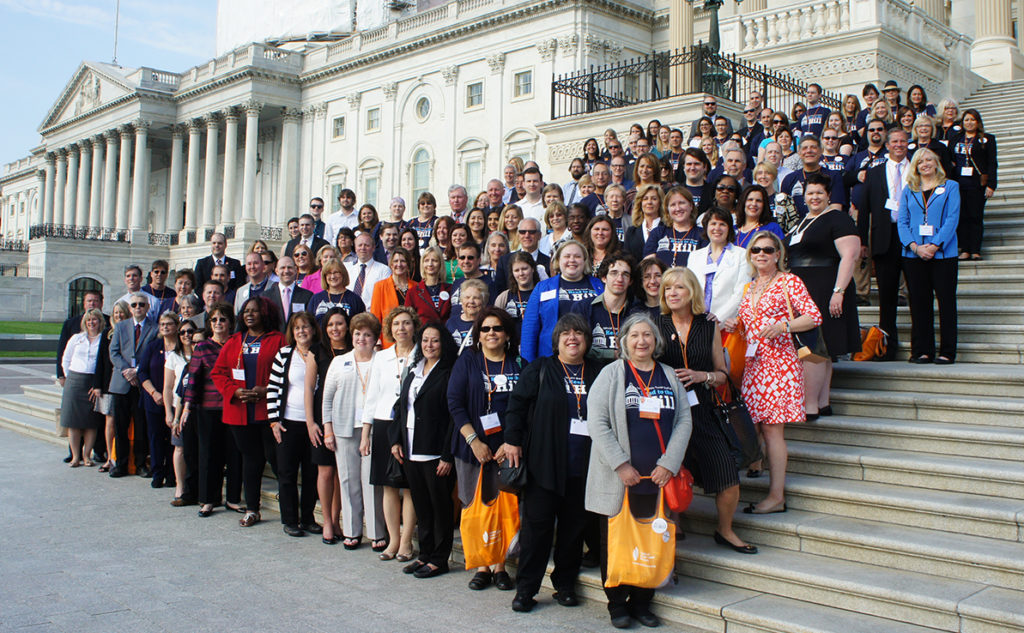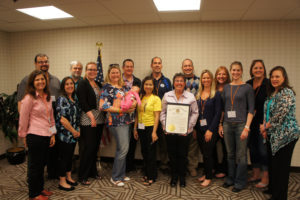I don’t remember anything I learned in school about how our government works. American Government was taught in 8th grade, the year when I cared much more about wearing ‘Candies’ than listening to Ms. Kaufman talk about checks and balances and the three branches of the government. I was way too focused on Brian, the boy in front of me, and his curly brown hair. Mostly, I wanted him to turn around so I could catch a peak at his flirty blues. I did not want to know how many votes you need to pass a law or what qualifications you need to run for office. Life went on.
Then 12 years ago, my 15-month old daughter, Caroline, was diagnosed with an aggressive brain stem tumor. After 10 days, she was completely crippled, paralyzed from the tip of her tiny toes to the top of her scarce red hair. She could not move her mouth to speak, her vocal chords frozen. She could not eat or smile. I would know she was crying when silent tears dripped from her eyes. She passed away 63 days later without any successful treatment.
I wanted to fight back, and several years ago I crafted a good plan. I would go to Head to the Hill, but I would bring a pinch of rebellion. I would follow the rules, but I would let my legislator know that I was a force and I had a message. My congressional representatives needed know about Caroline and the wretched experience of a brain tumor. They needed to feel my loss.
How are brain tumor advocates heard?
National Brain Tumor Society holds a advocacy day once a year called Head to the Hill. It offers the opportunity to tell my elected officials exactly which bills they should co-sponsor. It gives me the prospect to convince my legislators that I will be positively impacted by the passing of a bill. I ask my legislators to be my voice during the vote and speak for me by being a co-sponsor and supporting my needs.
Even though I’m a D.C. native, I never drive downtown. I’m the passenger and the kid-quieter, while my husband steers the ship. He knows every vacant lot and parking secret. He maps out every Starbucks and soup shop while I push the stroller. But now, I was in my city to work on the behalf of hundreds of thousands of people living with this disease.
My first Head to the Hill event was a mystery, a day where I had to learn legislation, impossibly recall the bill creating process (did it have curly hair and blue eyes?) and navigate streets and buildings the size of a college campus. I was so glad somebody mentioned to bring along my sneakers and even happier that I tossed in my orthotics. After each meeting, my posse giggled while I bared my glitter toe nails and slipped into cozy shoes.
I was equally glad that I went to the training day before the day of meetings.
During those sessions I:
- was given the tools to be an effective team player in my constituent group,
- learned the basics of the ‘ask’ with just enough detail to sound knowledgeable, and
- practiced telling my story in a persuasive and concise way.
Even more importantly, I met other people impacted by brain tumors. It was a great day of fellowship, sharing similar traumas yet hearing stories of survivorship and inspiration.
And then came the Head to the Hill advocacy day.
While there were no members of Congress at my meetings that day, I met with a host of congressional staffers, some of them only in their early 20s. In one meeting, I worried that the kid I was talking to couldn’t relate or even care about our needs. I pressed ahead and my apprehension quickly vanished. The “kid” turned out to be my legislator’s best friend. In the weeks to come, she did the research on my ask and authored his cheat sheet. She reminded him that I have a meaningful story, my ask is important, and that I voted for him.
This staffer is now my lifeline, my cable to my congressman. I must make a positive and memorable impression on her. I want her to want what I want. Members rarely attend meetings and even when they do, they rely on their staffer’s cheat sheet as a guide. In fact, the relationship with the staffer is the most powerful tool in reaching the member. She has more face-time than anybody else. Never underestimate the power of a staffer.
Attending Head to the Hill is my chance to share my history and let Congress see a glimpse of my challenges with brain tumors. They hear first-hand what it is like to be a caregiver for a suffering patient, or to mourn the devastating loss of a young baby from a brain tumor. I serve as a reminder that they are there to hear my needs and solve issues that affect me. By telling my story, I transform a written bill into a personal story, a connection that gives the bill a life along with its words. My participation is the reason my legislators support legislation important to the brain tumor community. It is invaluable.
Join me at the 2016 Head to the Hill, May 2-3, where we tell Congress our stories and encourage them to support the issues important to the brain tumor community.




![lisabethannellynadamson at WH[1]](http://blog.braintumor.org/wp-content/uploads/2015/09/lisabethannellynadamson-at-WH1-300x225.jpg)
